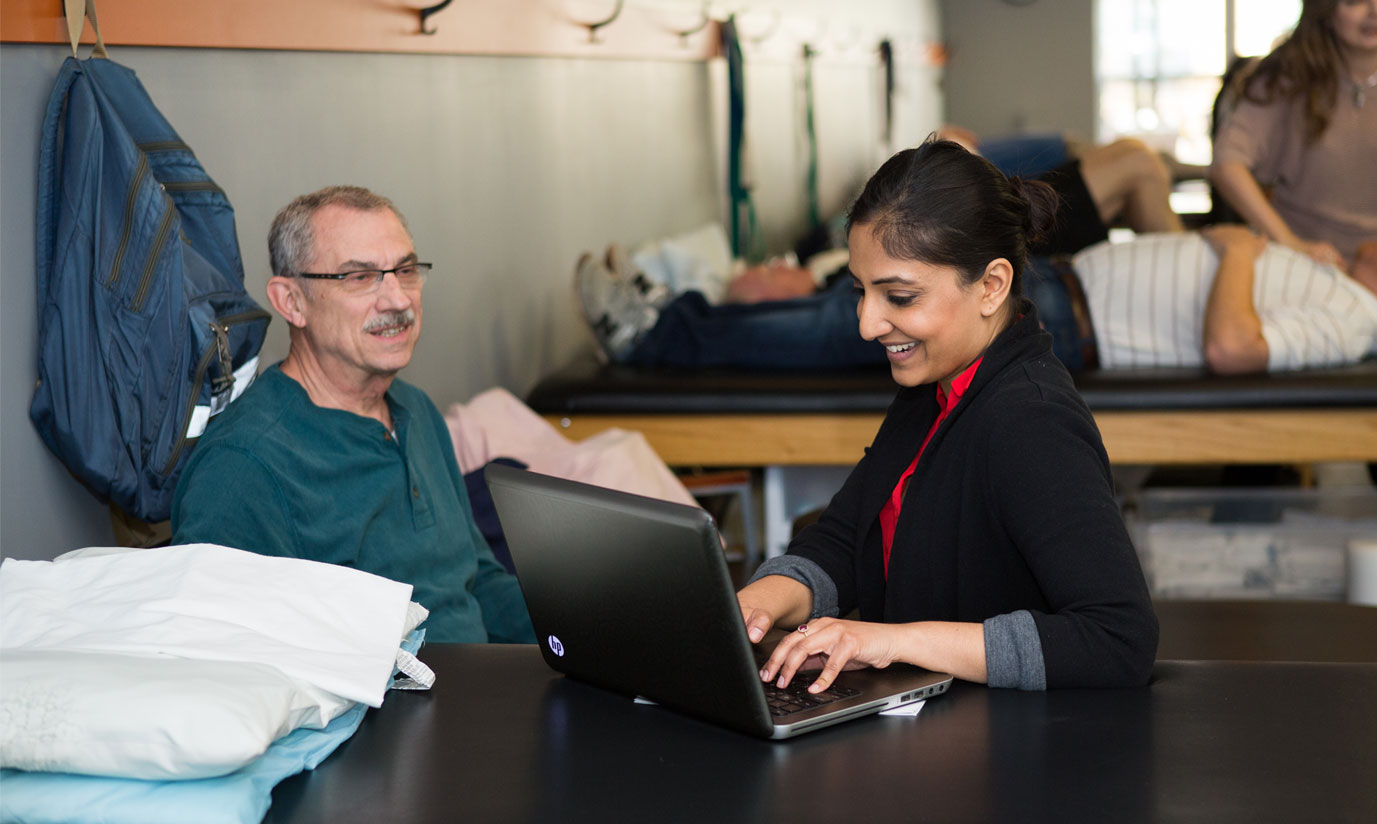
GERIATRICS - Integumentary Considerations for the Older Adult: Age-Related Changes, Common Problems, and Impact of Prevention
-
Register
- Non-Member - $200
- PT Member - $120
- PTA Member - $120
- Student - $120
- Post-Professional Student - $120
- Staff - Free!
- *Further discounts may apply once you log in.
Normal age-related changes in the integumentary system put older adults at risk for skin compromise. Years of accumulated environmental exposure, social factors, and the presence of chronic disease also puts this population at higher risk for skin breakdown. Painful, open wounds, especially those associated with chronic disease, can have a profoundly negative impact on the quality of life of older adults, including reduced mobility, loss of independence, and life-threatening infection. This monograph aims to educate physical therapists in the examination, evaluation, and intervention of wound etiologies common in the elderly population. Information regarding early screening for risk factors and prevention strategies are also emphasized.
Editor: Barbara Billek-Sawhney, PT, EdD, DPT
Learning Objectives:
Upon completion of this home study course, the course participant will be able to:
1. Describe normal age-related changes in the skin and describe how these changes place older adults at risk for open wounds and slower healing.
2. Summarize the phases of normal wound healing and how these phases may be negatively impacted by advanced age.
3. Recognize complicating factors common in the elderly population that can negatively impact healing potential.
4. Recall the components of wound examination and how each should be performed.
5. Identify signs and symptoms of local and systemic infection.
6. Compare and contrast various methods of wound debridement to include advantages, disadvantages, and contraindications.
7. Describe different methods of wound irrigation and when to use antiseptics.
8. Discuss how specific biophysical agents may be utilized to promote improved healing in elderly patients.
9. Select topicals and wound dressings capable of managing an optimal healing environment for wounds with various characteristics.
10. Apply examination, evaluation, intervention, and prevention processes to specific wound etiologies common in the elderly.
11. Select evidence-based classification systems and outcome measures for specific wound etiologies.
12. Discuss the importance of interdisciplinary care to optimize wound healing in the elderly.
13. Explain how patient culture may impact examination, intervention, and prevention.
14. Integrate physical therapy integumentary knowledge through a case study example of an older patient with an open wound.
Karen A. Gibbs
PT, PhD, DPT, CWS
Dr. Gibbs received her entry-level Master of Science in Physical Therapy (1999) and Transitional Doctor of Physical Therapy (2003) degrees from the University of the Pacific. She was certified by the American Board of Wound Management as a Certified Wound Specialist in 2001 and completed her PhD in Adult Education at Texas State University in 2011. Dr. Gibbs has practiced as a physical therapist in outpatient, skilled nursing, and acute care settings. She is currently a Professor in the Department of Physical Therapy at Texas State University where she teaches wound management and examination techniques and lectures in structural anatomy, pathophysiology, and therapeutic interventions. Dr. Gibbs is a member of the American Physical Therapy Association (APTA) and currently serves as President of the Academy of Clinical Electrophysiology and Wound Management (ACEWM) section. She is also a member of the Association for the Advancement of Wound Care (AAWC) and a past member, international educator, and clinician with Health Volunteers Overseas.
Deborah M. Wendland
PT, DPT, PhD, CPed
Dr. Wendland received her entry-level Master of Science in Physical Therapy (1996) and Post-Professional Doctor of Physical Therapy (2006) degrees from Washington University in St. Louis. She is certified in Pedorthics through the American Board for Certification in Orthotics Prosthetics and Pedorthics. She completed her PhD in Applied Physiology at the Georgia Institute of Technology in 2013. Dr. Wendland has practiced as a physical therapist in acute care, skilled nursing, outpatient, and home health care settings. She currently volunteers leading a Diabetic Foot Clinic for underserved individuals in Atlanta, GA. She is an Associate Professor at Mercer University in the Department of Physical Therapy where she teaches health promotion and wellness, foundational sciences of the musculoskeletal system, and integumentary care. Her areas of research include health promotion in people with diabetes as well as wound healing and skin re-loading in people with diabetes. Dr. Wendland is a member of the APTA and serves as the Section Program Chair for the ACEWM. She also serves on the Clinical Practice Guideline team for Diabetic Foot Ulcers through the ACEWM.
Course Instructions
- Click on the Contents tab to watch the course recording.
- Click the Take Quiz button to complete the assessment. Learners will have 3 attempts to pass and must answer at least 70% of questions correctly.
- Click the View/Print Your Certificate button under the Certificate listing. You can view/print your certificate at any time by visiting the APTA Learning Center and clicking the CEU Certificate/Transcript link on the left-hand side of the page.
Need Assistance?
For assistance logging in, accessing activities, claiming credit, or for other questions or concerns, please e-mail learningcenter@apta.org.



